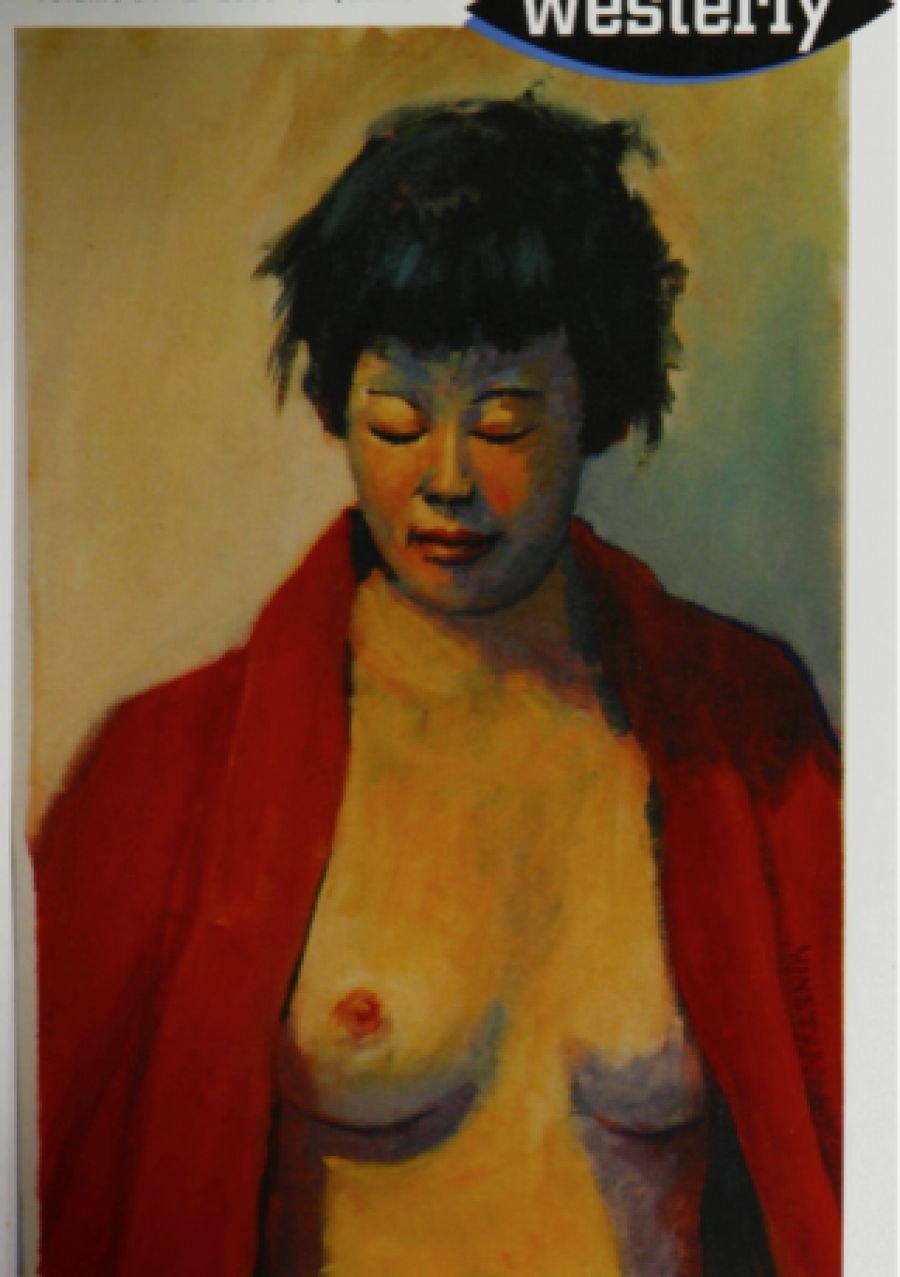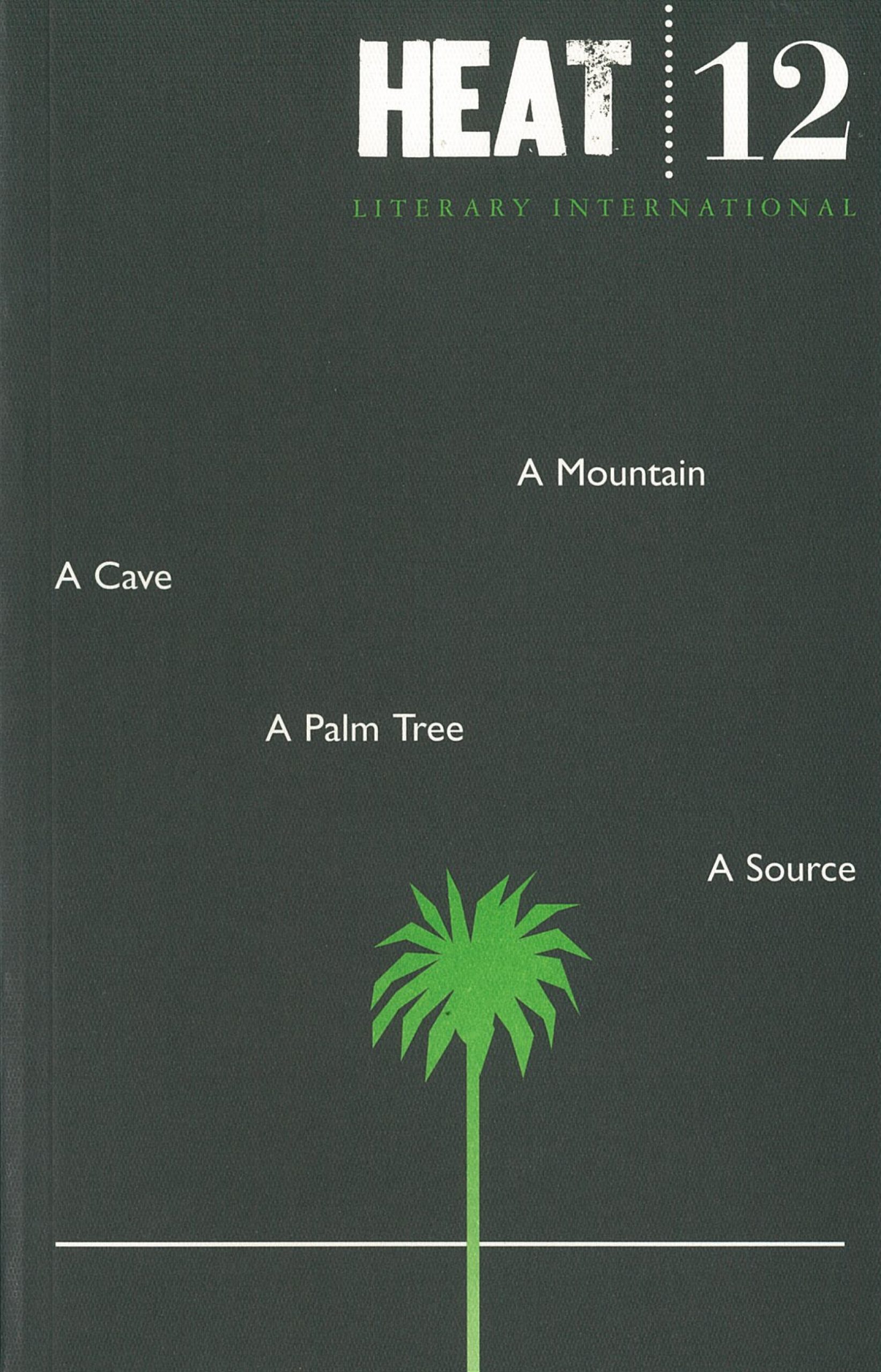
- Free Article: No
- Contents Category: Literary Studies
- Review Article: Yes
- Article Title: Multiple heartbeats
- Online Only: No
- Custom Highlight Text:
Who reads literary magazines, and why do they? Writers looking for what is being published, academics keeping up with who is being published, the elusive ‘general reader’ looking for a good read? The current volumes of HEAT and Westerly offer multiple reasons and rewards for picking them up, reasons which extend well beyond these superficial factors. Reasons which may send you to the postbox with a subscription form.
- Book 1 Title: Westerly
- Book 1 Subtitle: Volume 51
- Book 1 Biblio: $25.95 pb, 234 pp
- Book 2 Title: HEAT
- Book 2 Subtitle: Number 12
- Book 2 Biblio: Giramondo, $24.95 pb, 212 pp
- Book 2 Cover (800 x 1200):

HEAT, under the intellectually creative editorship of Ivor Indyk, has had several homes in its ten-year life, and has never looked more vigorous, with its rich mixture of what it describes as ‘Non-Fiction, Poetry and Not Exactly Non Fiction’. HEAT is currently published under the auspices of ‘The Giramondo Publishing Company for the Writing and Society Research Group University of Sydney’. An up-to-the minute amalgam of a banner if ever there was one, entrepreneurship and the academy in full embrace. It is good news to hear that from 2007 HEAT will appear three times each year. This current volume gives abundant reasons as to why this is a good move.
Here we are offered state-of-the-art poetry from some of Australia’s finest contemporary poets – Robert Adamson, Jennifer Maiden, Dorothy Porter, Philip Salom, Geoff Page – as well as poetry by younger poets, all of high quality: mostly colloquial, richly historical. Jamie Grant’s moving poem ‘DFC’ closes the volume. It is a tribute to his father, in life and death, a young pilot over storm-ravaged seas in World War II, who now faces death as an old and incapacitated man: ‘… Vast / ocean swells were breaking over black reefs / while all of his unclear beliefs / gazed down at the engulfing dark which could, / my brother suddenly understood, / prevent his own existence. Gusts of wind / snored outside. The old pilot grinned.’ The poem is full of poignant loss but is never sentimental, its rhyming iambics marshalling the vigour and discipline of a long life’s accomplishments.
This is how you might also describe the very important excerpts from poet and musician Fay Zwicky’s ‘Journal 2004–2005’. Not the rhyming, this time, but the self-reflexive and adamantly humble prose thoughts of an ageing woman who has contributed so much to Australian literary culture, and whose wry, opinionated, moving and sometimes crotchety views she hopes to offer ‘in private these days without any messianic delusion clouding the view’. This public sharing of the private is frank and free of ego as it generously reveals the fears, mistakes and joys of a woman steeped in a love of music and literature. Zwicky’s writing made me reflect deeply on the gains and losses of the public and private self, often with an unpreachy gendered aspect, and with many bleakly liberating possibilities: ‘I think I’m one of those who prefers the later years with all the pain and disability they’ve brought: the gift of invisibility, the dropping away of self-consciousness, the observer’s vantage point without regret for non-participation.’ Of course, Zwicky is still participating; her journal and her sharing of it are proof.
I began my reading of this volume of HEAT in the middle, putting on my academic hat and racing to Mark Davis’s provocative essay ‘The Decline of the Literary Paradigm in Australian Publishing’. Such an essay, here, in this literary journal par excellence? But this is one of the reasons HEAT is so valuable: it embraces and confronts the deeply aesthetic (Malouf on Mozart, John Scott on Breton, James Ley on Hazlitt), as well as the doomsayers who predict and describe the fall of the literary, not just in Australia but internationally. Davis’s essay is rigorous, alarming, full of doom for literary publishing in Australia. He has the figures; this isn’t merely another puff piece on declining literacy rates. It’s a rational, gloomy, historically informed presentation of how the literary is being squeezed out of existence in Australia at ‘the end of a period of government interventionist nation-building, both in general terms and with respect to the book publishing industry’. The ‘opening up’ of the Australian economy to international competition included the Howard government’s axing in 1996 of the Book Bounty and his introduction of GST on all non-food products, as well as the low levels of government funding for literature. In this context, Davis’s conclusion is gripping: ‘The problem is not merely literary – it is one of founding a genuinely popular critique of neo liberal marketisation, even as the traditional intellectual bases from which such critiques spring, including literary culture, have been sidelined.’ This is of course a call to arms, and not merely doomsaying. The very existence of magazines such as HEAT and Westerly is also a call to work – think, read, write, subscribe – for intellectual and cultural life in Australia against such neo-liberal market fundamentalism.
This refusal is also the tenor of Westerly’s opening essay by Robert Smith, ‘Values, Distances, Cultures: Foundation of Westerly’. In a pithy and punchy retrospective piece on the founding moments of the journal, Smith, the first editor in 1956, registers the gap between early idealisms and the current political and cultural moment: ‘Now, at a time when common understanding and co-existence are even more vital to survival than they were then, it is disturbing to encounter situations where cultural knowledge is applied for expedient sectional ends in preference to mutual benefit.’ Smith’s is an older, humanist discourse, but it sits strongly and illuminatingly beside Davis’s empirically and ideologically impelled current arguments.
Westerly, as its name suggests, is produced in Western Australia, under the capable joint editorship of Delys Bird and Dennis Haskell at the Westerly Centre, University of Western Australia. Its strength is in its presentation of poetry and stories, as well as literary critical and review essays. There is a conscious featuring of Western Australian authors, but also a strong showing of easterners. New and more established authors mingle democratically, and the self-reflexive regional emphasis is a strength of the journal.
David Carter’s review essay, ‘Public Culture Publishing: 2005–2006’, takes up in different ways the themes raised in Davis’s and Smith’s essays, in its survey of the last year’s non-fiction. He begins by noting that ‘questions of race and culture (local, national and transnational cultures) are still driving Australian studies’. However, the essay proceeds to dig deeper, into ‘the conditions of publishing and getting published in Australia’. All but five of the twenty-five books Carter is considering are published by independent Australian houses. There are thirteen houses listed, including five former university presses, now independent (read market-driven). Carter perceptively diagnoses the ills of Australian publishing, particularly the lack of literary-critical publications: ‘Extended analysis of Australian writers and their works is scarcely part of our public conversations, except sensationally when the occasion allows an attack on the literary establishment or the chattering classes.’ The rousing conclusion is that in a climate where such a cultural and intellectual gap is bleedingly evident, and where attacks on the university and particularly the humanities proliferate, it is good to remember that ‘authors working in and trained in Australian universities are doing the work of remembering, recovering, arguing, interpreting – in short, researching and writing the books of our cultural and social memory’.
Why should we read literary journals such as HEAT and Westerly? For some of the reasons emerging above, but also for the lucidity and critical acuity with which such essays as ‘Out of Sight’ (Bilal Khbeiz) and ‘Bodies of Water’ (Joseph Pugliese) are written. These two essays solemnly, starkly inaugurate this volume of HEAT, and they are unmissable. The first is a brief, visceral polemic and meditation on the recent onslaught of violence in Lebanon, by Khbeiz, an editor and author in Beirut. It is balanced, positioned, revelatory: ‘Israel’s fundamental belligerence is nevertheless akin to Hezbollah’s militarism’; and ‘Perhaps it is fitting to warn them [both Zionists and Hezbollah] that if there is an ark after this deluge, this one will carry nothing but a pair of warriors.’ Pugliese’s essay describes in moving, articulate fury the reality of bodies washed up on Italy’s shores: ‘they float, drift, voice hoarse calls of despair and then sink. Historical repetitions, they trace the ephemeral itinerary of journeys destined to achieve no landfall.’
Don’t miss these two fine Australian literary journals. Here, as so often, ‘the literary’ necessarily embraces the aesthetic and the political. It is capable of transforming old paradigms and readerships. It is a vital indicator of a culture’s multiple heartbeats.


Comments powered by CComment